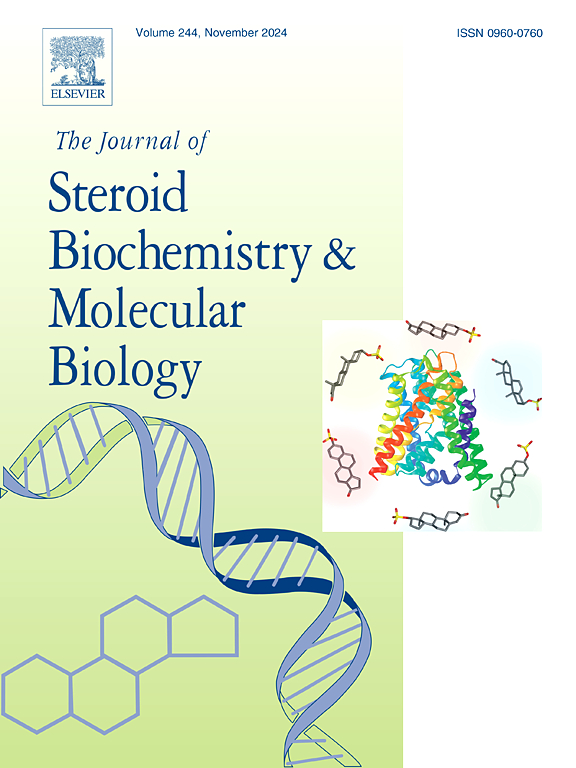Sexual dimorphism and susceptibility to Alzheimer’s disease: Understanding genetic involvement and other risk factors
IF 2.5
2区 生物学
Q3 BIOCHEMISTRY & MOLECULAR BIOLOGY
Journal of Steroid Biochemistry and Molecular Biology
Pub Date : 2025-08-13
DOI:10.1016/j.jsbmb.2025.106843
引用次数: 0
Abstract
Alzheimer's disease (AD) is a progressive neurodegenerative condition characterized by persistent cognitive decli ne, tau-containing intracellular neurofibrillary tangles, and β-amyloid (Aβ)-containing extracellular plaques. Early symptoms include patchy memory loss and some behavioural abnormalities. There is a plethora of studies that have reported sexual dimorphism and a higher prevalence of Alzheimer's disease in women. However, the molecular mechanisms responsible for these differences remain an enigma. The increasing aging population, as well as the decline in estrogen levels, have been attributed to increased risk in the development of AD in women. Hormone replacement therapy (HRT) has been proposed as an approach for tackling the increased AD susceptibility in women; increased AD vulnerability in men is also linked to testosterone levels. In addition to the hormonal influence as one of the causative factors for increased risk of AD, there is the involvement of genetic factors, with APOE ε4 gene documented as a risk gene leading to tau pathological changes in the brain of female AD patients. Here, we aim to systematically examine literature on the factors and molecular mechanisms responsible for sexual dimorphism in increased vulnerability and pathological features of AD, with the hope that it may provide information on the diagnosis and therapeutic interventions in AD.
两性二态性与阿尔茨海默病的易感性:了解遗传参与和其他危险因素
阿尔茨海默病(AD)是一种进行性神经退行性疾病,其特征是持续的认知能力下降,含有tau的细胞内神经原纤维缠结和含有β-淀粉样蛋白(a β)的细胞外斑块。早期症状包括局部记忆丧失和一些行为异常。有大量的研究报告了两性异形和阿尔茨海默病在女性中的较高患病率。然而,造成这些差异的分子机制仍然是一个谜。人口老龄化的加剧,以及雌激素水平的下降,都被认为是女性患AD风险增加的原因。激素替代疗法(HRT)已被提出作为解决女性阿尔茨海默病易感性增加的方法;男性阿尔茨海默病的易感性增加也与睾丸激素水平有关。除了激素影响是AD风险增加的原因之一外,遗传因素也参与其中,APOE ε4基因是导致女性AD患者大脑tau病变的危险基因。在这里,我们的目的是系统地检查有关AD易感性增加和病理特征中两性二态性的因素和分子机制的文献,希望它可以为AD的诊断和治疗干预提供信息。
本文章由计算机程序翻译,如有差异,请以英文原文为准。
求助全文
约1分钟内获得全文
求助全文
来源期刊
CiteScore
8.60
自引率
2.40%
发文量
113
审稿时长
46 days
期刊介绍:
The Journal of Steroid Biochemistry and Molecular Biology is devoted to new experimental and theoretical developments in areas related to steroids including vitamin D, lipids and their metabolomics. The Journal publishes a variety of contributions, including original articles, general and focused reviews, and rapid communications (brief articles of particular interest and clear novelty). Selected cutting-edge topics will be addressed in Special Issues managed by Guest Editors. Special Issues will contain both commissioned reviews and original research papers to provide comprehensive coverage of specific topics, and all submissions will undergo rigorous peer-review prior to publication.

 求助内容:
求助内容: 应助结果提醒方式:
应助结果提醒方式:


